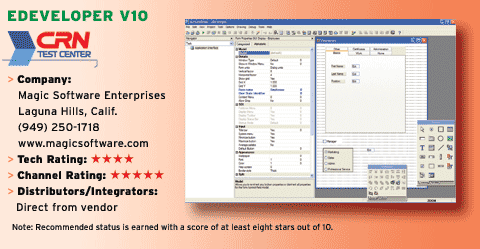Competitors Can&'t Catch Up To Systinet
Editor's Note: CARL VERVERS is a senior enterprise architect with ThoughtWorks, a global IT consultancy focused on end-to-end global software development and delivery. His responsibilities include helping clients adopt service-oriented architecture that supports more adaptive business and IT organizations. Here, Ververs reviews Systinet Registry 6.5.
Service-oriented architectures (SOAs) are all the rage these days. Even though many enterprises are still trying to figure out what exactly EAI has done for them, they&'re afraid to miss the boat in case SOA delivers. SOAs have a chance to dramatically change the way business works with IT, both technologically and organizationally. This in turn has sparked a demand for tools to support the business orientation of applications (an enterprise architecture that aligns business and IT can be called a business-oriented architecture, or BOA).
Systinet Registry is such a tool. Often called the cornerstone of an SOA, a registry seeks to be the system-of-record of published services. But rather than simply being a listing of WSDLs, registries are evolving into the hub of SOA information.
Systinet has firmly positioned itself as “The Registry Company.” Its product is mature and has many features that current SOA implementers are now discovering as useful and necessary for their environments.
From the newly emerging flock of registry products, Systinet is by far the most advanced in overall features and UDDI 3.0 support—so much in fact that BEA Systems and Oracle have integrated Systinet Registry into their product lines.
Systinet&'s staff has been responsive, both in revenue-generating and nonsales situations. ThoughtWorks&' clients have had nothing but good experiences with this product, mainly for the reasons above. Systinet is actively pursuing strategic partnerships in the SOA space. One such partnership, with AmberPoint, has resulted in the SOA Starter Pack, an SOA beginner&'s kit.
Some of the main features that make the Systinet Registry useful in practice are its full-service life-cycle support, selective replication, digital signatures, broad taxonomy support, a solid user interface and SOA management vendor integration.
When setting up the registry, a services approval workflow using a development QA and production registry can be created.
Developers can publish new services into the Publishing instance while developing. When they feel their WSDL is ready, they can submit it for approval. The people responsible for services design then can act as a gate by testing services in the Intermediate instance. When the services pass, the WSDL then can be submitted for production approval into the Discovery instance. This process has been improved and streamlined in version 6.5 of Systinet Registry.
Users can subscribe to registry entries. Every time something changes on a service, the subscribers are notified, so they can react to or capitalize on service improvements.
Selective Replication allows registry contents to be shared with other internal or external Systinet registries. Thus, a network of peer registries can be built to share service information—much like RIP allows routers to selectively share their routes.
Even though UDDI 3.0 proscribes protocols for registry synchronization, vendors have not made any effort to share their data. Although extensive out of the box, the Systinet Registry taxonomy can be expanded. Systinet refers to this as Browsable Taxonomies. Where Registry version 6.0 only lets the user display additional taxonomies, version 6.5 allows for full customization, with search and edit.
The live integration of services metrics into a registry is the last hurdle to cross for many budding SOAs. It's one thing to publish functionality, and another to rely on other groups' services to run your business. Actual usage and uptime data will validate a service&'s production quality. Systinet has worked with services management vendors to allow them to publish live metrics into its Registry, under separate taxonomies. This metric is displayed with the standard Systinet Registry service data.
Another useful feature of version 6.5 is its ability to manage dependencies. Administrators can view incoming and outgoing dependencies of any given service. Currently, it&'s not possible to get a full map of the registered services, but an administrator can click through the registry to determine downstream dependents.
Since Systinet Registry is used by many other SOA product vendors, the only real competition is from Sun Microsystems and Infravio. But Systinet has taken a front seat in SOA product offerings. Because of its strategic partnerships with a slew of other SOA product vendors, Systinet has enhanced its product&'s maturity and deepened its feature set. And with its upcoming version 6.5, the company has gained a decisive advantage over other registry products—open source or otherwise.
Pricing for Systinet Registry 6.5 starts at about $40,000 on small implementations; pricing ultimately depends on the size and scope of an implementation. Systinet did not disclose margins.
